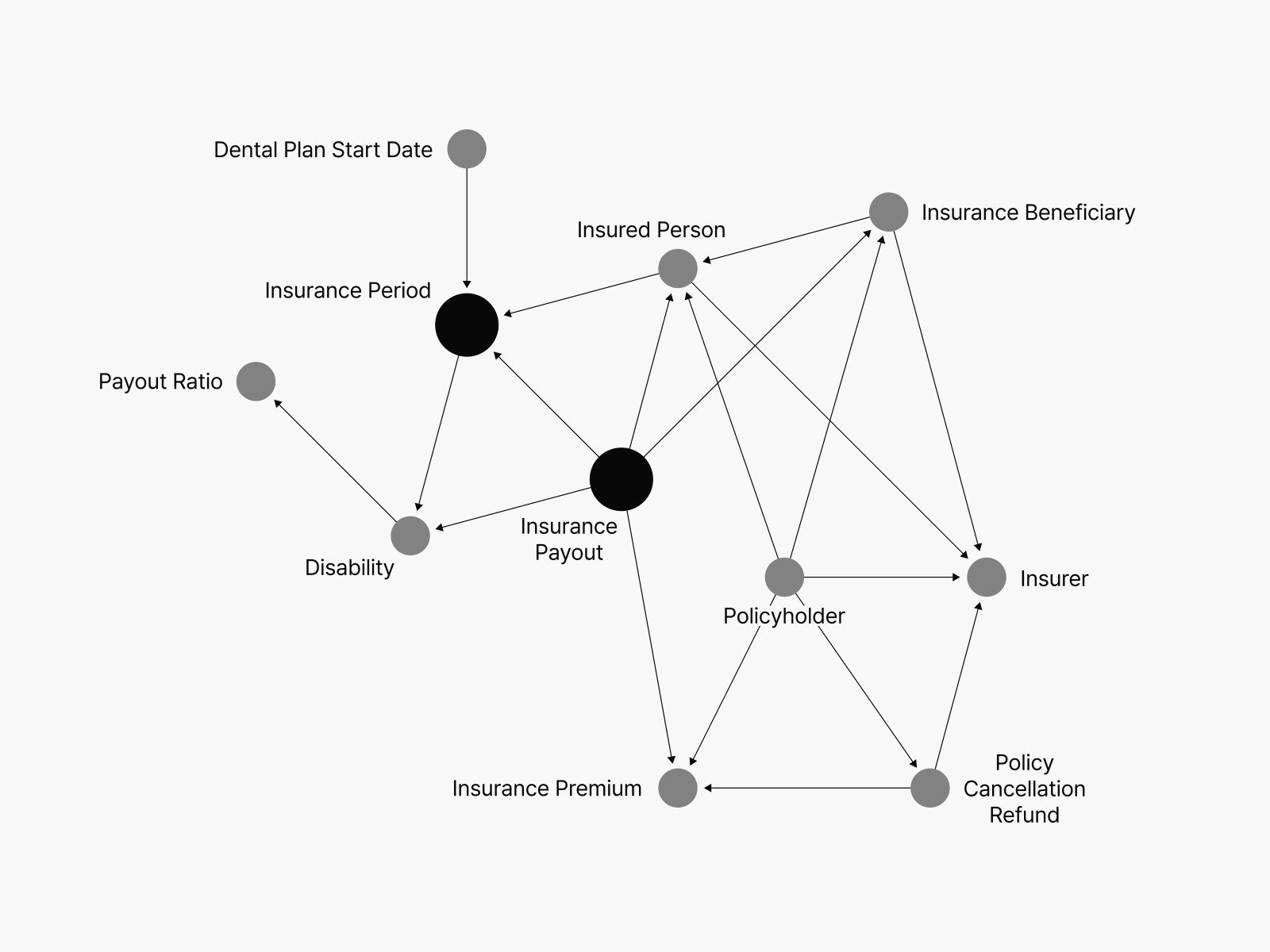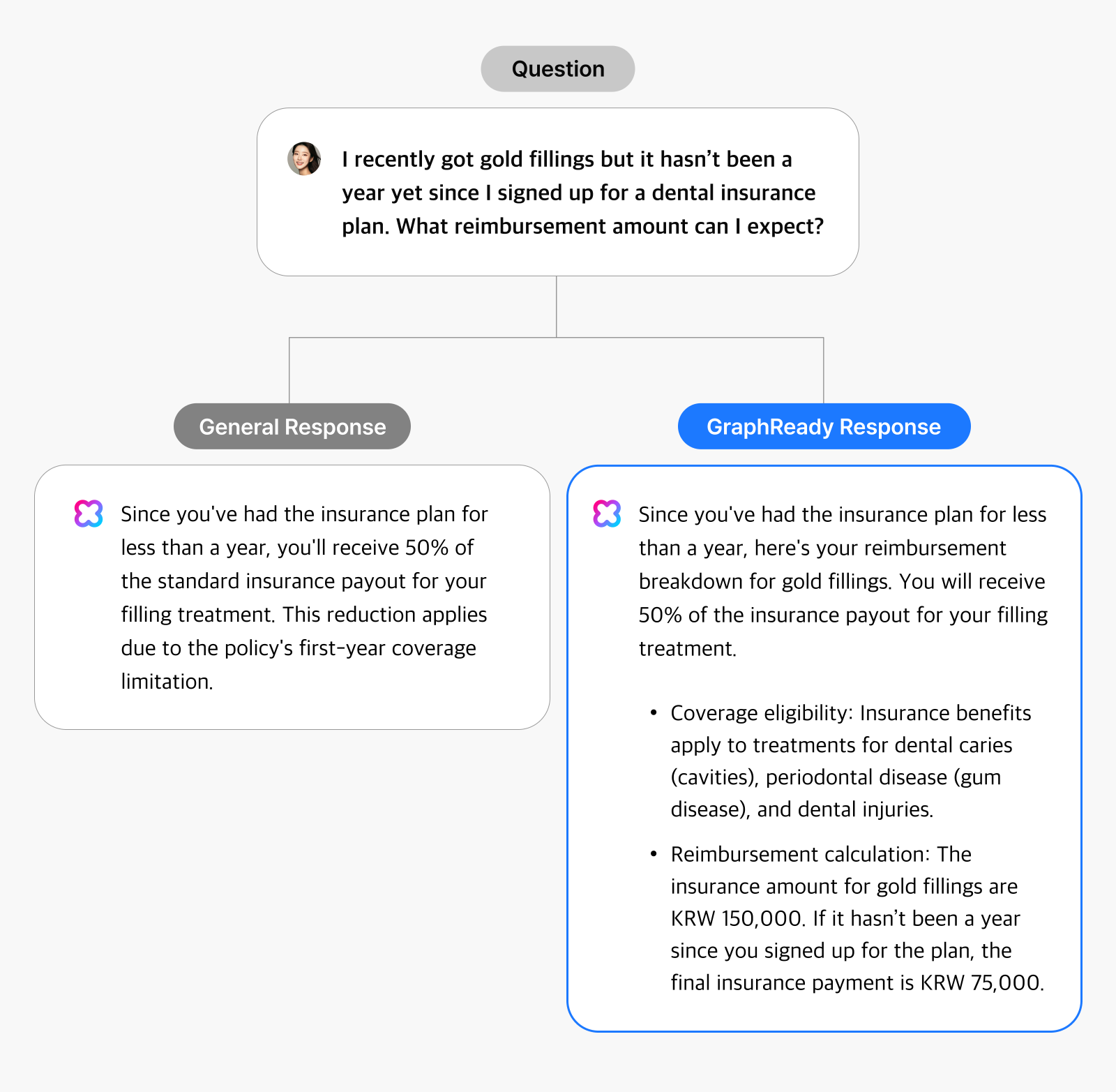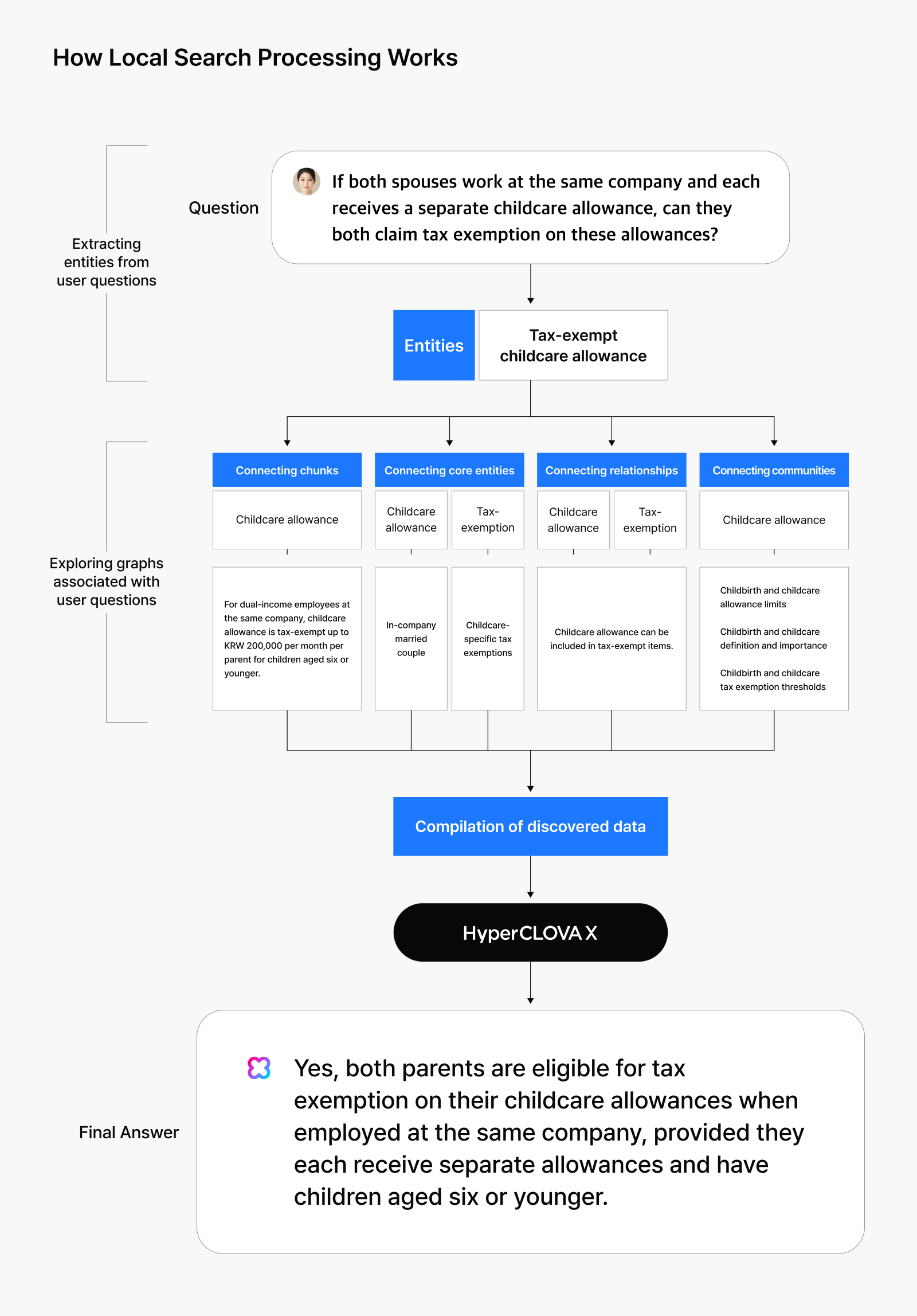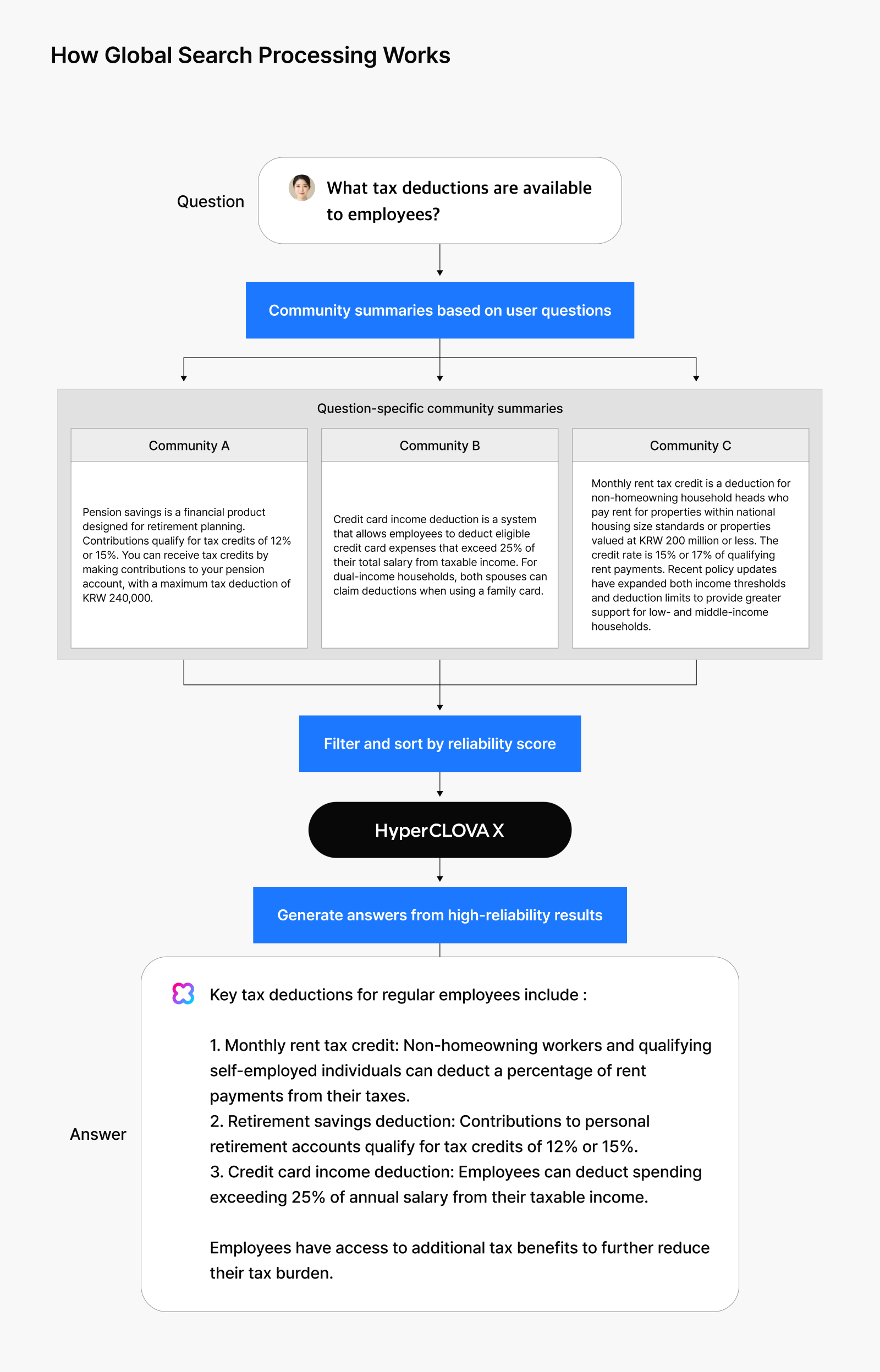The power of connection
How do you find the information you need from hundred-page long insurance fine print?
How do you pick out which deductions apply to you when filing tax returns?
These challenges share a common thread: navigating through the overwhelming amounts of interconnected information. From medical records to legal documents and financial data, data is becoming exponentially complex and demands more than simple search capabilities. The real value lies in connecting dispersed pieces of information. When analyzing patient records, you need to understand the relationships between symptoms, diagnoses, and prescribed treatments. When reviewing legal documents, you have to grasp how different clauses interact with each other. True insight emerges only when we can map and leverage these connections.
Enter GraphReady: an innovative tool that transforms complex data into intuitive “connection maps,” revealing hidden relationships between data. By helping users quickly and accurately discover these vital connections, GraphReady empowers better decision-making. Built on RAG (retrieval-augmented generation) technology, it represents a new approach to information analysis.
Keep reading to discover how GraphReady emerged and what makes its intelligent answers possible.
Is RAG having trouble answering your question? GraphReady can help you
RAG technology involves a large language model accessing external information to add accuracy and depth to its answers—think of it like a student referencing a textbook to solve exam questions. This makes it incredibly powerful for tasks requiring deep knowledge across massive datasets. However, as AI becomes deeply woven into our daily lives and data complexity increases, traditional RAG approaches show limitations.
Let’s explore three real-world scenarios where GraphReady offers enhanced capabilities:
Case 1: Mapping complex relationships between data
| Example query | Query type |
| I’m trying to file a cancer insurance claim. Can I still receive a payout if I have a history of noninvasive cancer treatment? | Requires mapping interconnected policy elements like specific reimbursement conditions and coverage exclusions |
Case 2: Making inferences using contextual information
| Example query | Query type |
| I’ve rented out my residence on a monthly lease while moving into another property under a lump-sum deposit lease as a householder. Am I eligible for the long-term mortgage interest deduction? | Requires synthesizing multiple tax regulations, including rent and householder status, mortgage deduction eligibility conditions, etc. |
Case 3: Synthesizing information across datasets
| Example query | Query type |
| Which brands are most popular for different baby items? | Requires analyzing patterns across multiple product categories and customer reviews |
How GraphReady takes RAG to the next level
GraphReady revolutionizes data analysis by transforming massive datasets into sophisticated “knowledge graphs” that enhance LLMs’ understanding and inference capabilities. While traditional RAG systems rely on simple search and content generation, GraphReady’s knowledge graphs represent information as a network of concepts and relationships, enabling deeper comprehension and logical reasoning. GraphReady combines NAVER’s expertise in big data processing and text analysis with cutting-edge AI technology to overcome common LLM limitations, such as information distortion and the challenge of processing lengthy texts.
[To learn more, read Creating more truthful AI: Enhancing language model reliability.]
By organizing information into clearly defined relationships, GraphReady significantly reduces misinformation and enables efficient navigation of complex data structures through advanced graph search algorithms. GraphReady particularly excels in technical domains where concepts remain stable but require precise understanding—such as tax laws, legal frameworks, and technical documentation.
▲ A knowledge graph of insurance fine
With GraphReady, AI models can tackle previously challenging tasks, particularly queries that demand deep understanding and comparison of complex concepts.
How does GraphReady deliver intelligent answers?
In this section, we’ll explore how LLMs reach their answers using GraphReady. First, it constructs a comprehensive knowledge graph by analyzing both the structure and topics of a dataset. This graph is then maintained in a condensed form for efficient retrieval. GraphReady identifies the key concepts relevant to the question, then traverses the pre-built knowledge graph to gather the necessary information. It then conducts a comprehensive analysis to deliver accurate and thorough responses to even highly sophisticated queries.
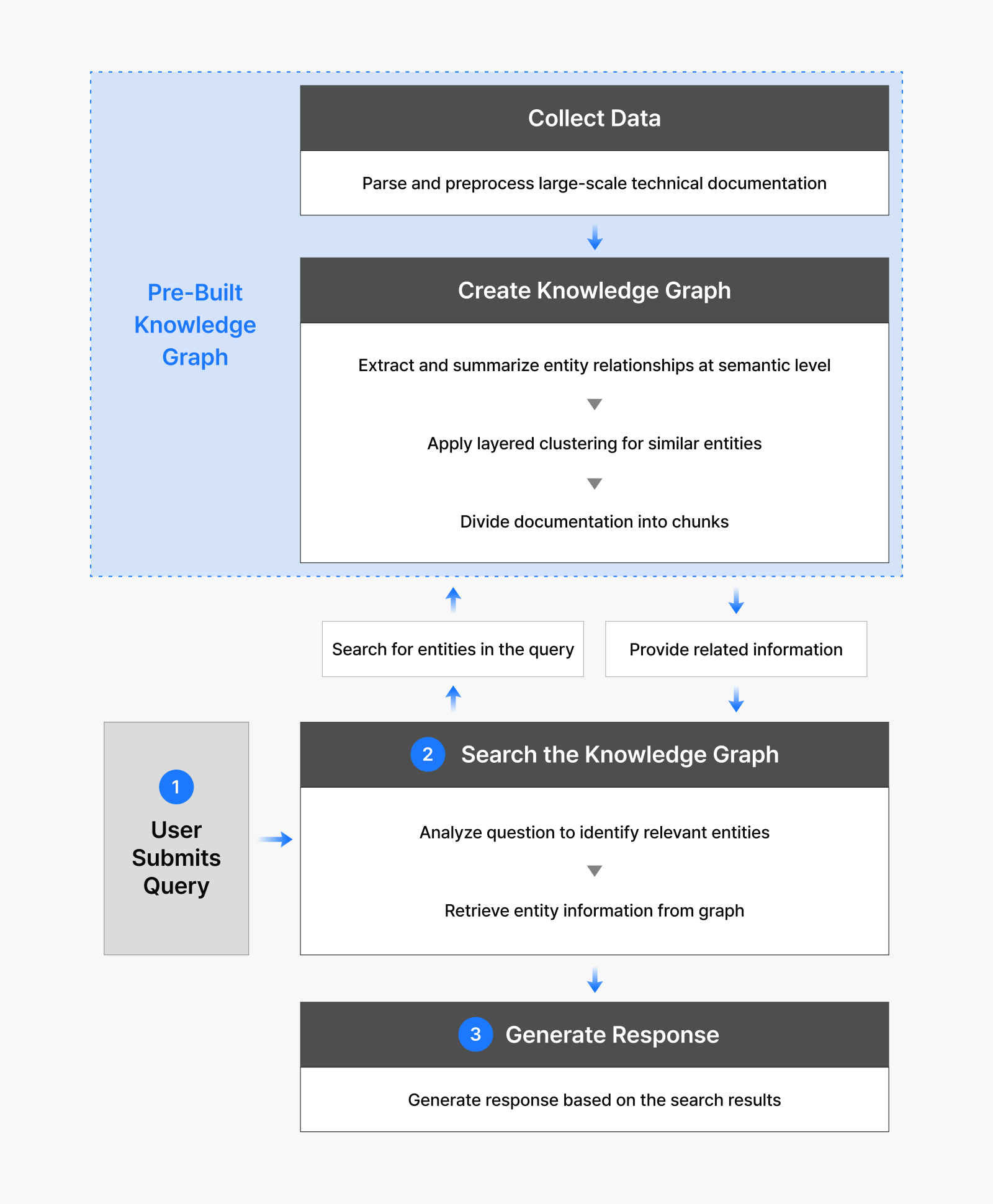
Let’s examine each step in detail.
1. Indexing documents and building knowledge graphs
The first step involves segmenting documents and extracting relationships between core entities at the document level. These entities and their relationships are transformed into nodes and edges, forming a knowledge graph.
The system then uses layered clustering to synthesize core entities based on their similarities, creating communities—or groups of closely interconnected nodes. In other words, these communities are chunks of documents and entities that share common topics or contexts. For instance, in tax filing documentation, one community might encompass documents related to “medical expense deduction,” while another is built around “housing subscription savings deduction.” To optimize storage and retrieval in large-scale data centers, the crucial information from these communities is stored in a condensed format.
2. Retrieving information for complex queries
In this step, the LLM locates relevant information from the pre-built knowledge graph to address user queries. Depending on the query type, it can take one of two approaches.
2-1. Local search: Fetching specific core entities related to user queries
For questions about specific topics—such as “married couples working in the same company,” “childcare allowance,” and “tax exemption”—GraphReady employs local search. It identifies and connects relevant entities within the knowledge graph to generate accurate responses.
2-2. Global search: Fetching all the relevant data
For broader queries like “What tax deductions are available to employees?” GraphReady uses global search.
Global search analyzes the entire dataset by leveraging communities from the pre-built knowledge graphs. When processing a query, it evaluates both the relevance and reliability of each community. The system prioritizes communities with high reliability scores to ensure accurate and trustworthy responses.
3. Generating answers that fulfill the intent of user queries
GraphReady’s advanced search capabilities enable it to generate precise responses. Its strength lies in processing large-scale data while maintaining accuracy—a crucial advantage when handling complex queries. By understanding user intent, GraphReady delivers optimal results that enhance the overall user experience.
Opening new possibilities with GraphReady
NAVER successfully implemented GraphReady in its “CLOVA year-end tax assistant” to support employee tax filing in January 2025.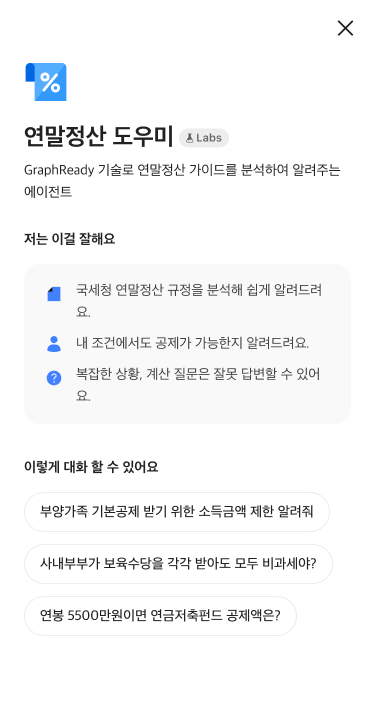 The system was trained on a knowledge graph built from National Tax Service guidance. Tax filing presents unique challenges because regulations change annually and outcomes depend heavily on individual circumstances. Traditional RAG systems struggled to provide adequate responses in this domain.
The system was trained on a knowledge graph built from National Tax Service guidance. Tax filing presents unique challenges because regulations change annually and outcomes depend heavily on individual circumstances. Traditional RAG systems struggled to provide adequate responses in this domain.
GraphReady overcomes these limitations through its graph-based search capabilities, delivering personalized and detailed answers based on each user’s specific situation. This enables it to address the diverse range of scenarios taxpayers encounter during filing.
While GraphReady excels at simplifying complex domains like insurance policies and tax regulations, its potential extends further. We’re developing the technology to create an agent with advanced inference capabilities across multiple applications:
- Provide customized information: Delivers accurate, timely information to support decision-making
- Extend technical knowledge: Applies across industries—from medical record analysis to legal document processing, financial data visualization, and customer service enhancement
- Make stronger connections: Creates value through intelligent data connections rather than simple storage and retrieval
Building on RAG’s foundation, GraphReady represents a paradigm shift in data intelligence. It moves beyond basic search functionality to maximize meaningful connections and understand complex relationships, opening new possibilities for knowledge processing and retrieval.

